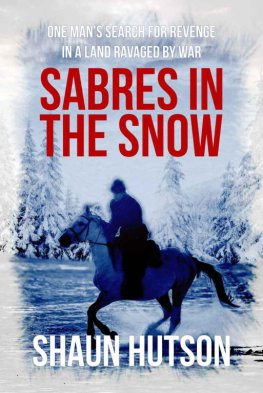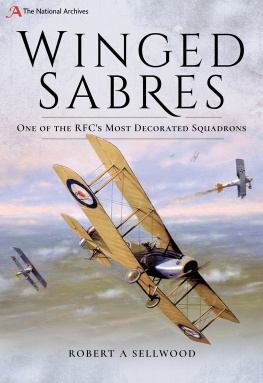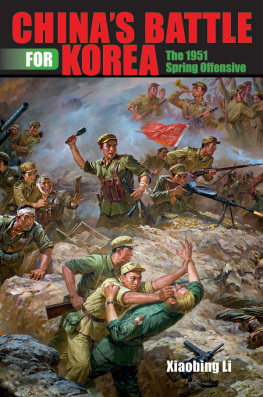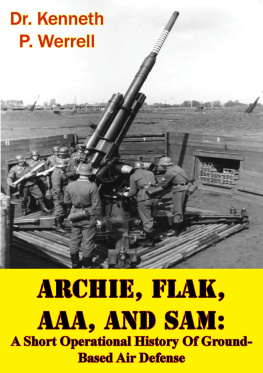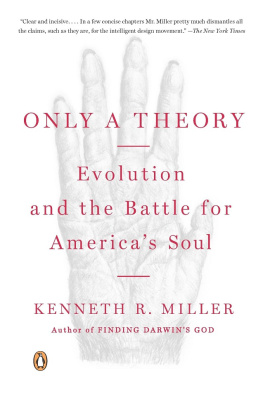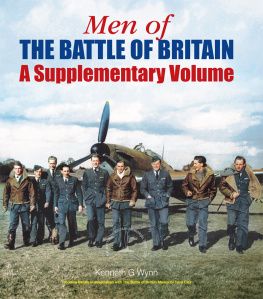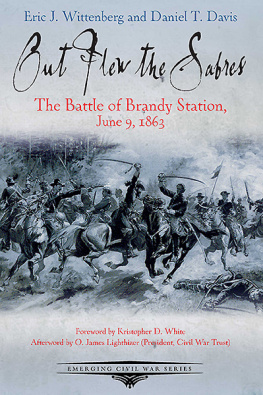SABRES
over MiG ALLEY
SABRES
over MiG ALLEY
The F-86 and the
Battle for Air Superiority
in Korea
Kenneth P. Werrell
Naval Institute Press
Annapolis, Maryland
The latest edition of this book has been brought to publication
with the generous assistance of Marguerite and Gerry Lenfest.
Naval Institute Press
291 Wood Road
Annapolis, MD 21402
2005 by Kenneth P. Werrell
All rights reserved. No part of this book may be reproduced or utilized in any form or by any means, electronic or mechanical, including photocopying and recording, or by any information storage and retrieval system, without permission in writing from the publisher.
Library of Congress Cataloging-in-Publication Data
Werrell, Kenneth P.
Sabres over mig alley : the f-86 and the battle for air superiority in Korea / Kenneth P. Werrell.
p. cm.
Includes bibliographical references and index.
ISBN 978-1-61251-344-7
1. Korean War, 19501953Aerial operations, American. 2. Sabre (Jet fighter planes)History. 3. Airplanes, MilitaryUnited StatesHistory. 4. Fighter pilotsUnited StatesHistory. I. Title.
DS920.2.U5W47 2005
951.904'248dc22
2005007347
12 11 10 09 08 07 06 9 8 7 6 5 4 3 2
To Jeanne
Contents
T his effort was inspired by those USAF pilots who flew F-86s at Lowery Air Force Base in the mid-1950s, especially those who had flown in the Korean War and awed a seventeen-year-old cadet at the Air Force Academy. These included Raymond Barton, Charles Gabriel, and William Yancey. I attempted to write this story there and then, but the academic system at that time would not allow it. So here, almost a half century later, is that account.
My sincere appreciation and thanks are extended to the great number of people who assisted in making this project a success. As the citations reveal, most of the research effort was conducted at the USAF Historical Research Agency, where Joe Caver, Archie Difanti, Dan Haulman, and Forrest Marion were notable for their help. At the Air Force Materiel Command, Bill Elliott lent valuable assistance, as did Doug Lantry at the Air Force Museum, Von Hardesty at the Air and Space Museum, Tim Nenninger at the National Archives, Tom Lubbesmeyer and Mike Lombardi at Boeing, and Wilson Sullivan and John Daly at the Federal Records Center in St. Louis. Thanks are also due to Sharon Sellers MacDonald for making sixty of her fathers letters available to me.
Sixty former Sabre pilots made a great contribution to this study. They were very cooperative in describing their experiences and in answering my numerous questions in a candid manner. Their contribution broadened what otherwise would be a multi-archival study and deepened it into areas thus far neglected.
The reference librarians at the Air University and Radford University made my task much easier, as did the interlibrary loan librarians. Special thanks are also due Mark Gatlin at the Naval Institute Press for encouraging this project and pushing it along. Jennifer Till and my competent and patient copy editor, John Geldmacher, were also instrumental in getting this project into print.
But most of all, this book could not have been possible without the effort, encouragement, and support of my wife, Jeanne.
SABRES
over MiG ALLEY

O n the morning of 8 November 1950, Communist MiG-15 jets engaged a USAF air strike over the Yalu River near the city of Sinuiju. One of the MiGs dove in front of 1st Lt. Russell J. Brown, who was flying the number two (wingman) position in a flight of four F-80s. Although the American jets could neither out-climb nor out-run the MiGs, they could out-dive them. The heavier American plane quickly overhauled the Soviet fighter, and Brown held down the trigger. The USAF credited him with a kill, officially (and tersely) noting that, During the encounter, Lt. Brown scored hits on an enemy MiG-15 that was seen to go down and explode. This was the first jet-versus-jet combat and, according to American sources, the first jet downed by another jet.
The next day two MiGs bounced an RB-29 near Sinuiju. The aircrafts tail gunner, Sgt. Harry Lavene, returned the enemys fire and claimed a MiG; the bomber was badly damaged and crash-landed in Japan, killing five of the crew.
MiGs also tangled with Navy aircraft operating in the area. On 9 November MiGs engaged a formation of prop attack aircraft, escorted by jet-powered Panthers (F9F). During the ensuing battle Lt. Cdr. William Amen got on a MiGs tail, peppered it with 20 mm projectiles, and pursued it down to the deck. Amens wingman saw the Soviet aircraft hit the ground. A week later, on 18 November, Ens. F. C. Weber destroyed a MiG; and Lt. Cdr. William Lamb and Lt. R. E. Parker shared credit for downing another.
Hintons formation, in an attempt to deceive the Communists, masqueraded as F-80s by using their radio call signs, air speeds, and altitudes. As the four F-86s headed in a northeasterly direction at twenty-five thousand feet, the number two man spotted four unidentified aircraft at eighteen thousand feet. The Americans quickly identified the aircraft as hostiles, and Hinton led the flight in a dive on the MiGs. The F-86s pulled 5 gs and out-turned the Soviet fighters, which dropped their tanks, began to dive, and then resumed a climb. The Sabres dove at full throttle, attaining a speed above the aircrafts Mach 0.95 red line speed, and closed the distance to their prey.
The Communist formation then spread apart, and the last man broke left, pursued by the second American element. Simultaneously, Hinton and his wingman pursued the other three MiGs. Hinton fired on the number two aircraft and observed hits on the aircrafts wing and fuselage. That fighter turned left and cycled his speed brakes as his aircraft began to smoke. Hinton closed to within eight hundred to one thousand feet as he bounced around in the MiGs jet wash. The American pilot fired a long burst and observed flame coming from the fighters tailpipe and smoke from its fuselage. He fired another long burst and saw long violent flames enveloping [the] entire aircraft, which then slowed down terrifically.
Thus began the titanic struggle between MiG and Sabre that would markedly shape the air war and, to a lesser degree, the entire Korean conflict.
The Korean War was a shock for Americans. The most powerful nation in the world, armed not only with conventional forces but also with atomic bombs and long-range bombers, was thwarted by the combined opposition of a second- and a third-rate military power. While the United States and United Nations (UN) achieved their initial objective, thwarting a direct invasion of the South, they failed to accomplish their later goal of unifying the entire Korean peninsula. Instead, the UN found itself in a grueling war of attrition with the most populous nation in the world. In sharp contrast to the total victory gained in 1945, the best the United States and UN could achieve after three years of fighting was a stalemate. Communist China emerged as a world power as it dealt a blow to the American psyche and pride. And the issue in Korea was not resolved. Fifty years after the end of the conflict, Korea remains divided, with American troops stationed there to counter the military threat that still exists on the peninsula.
Next page

